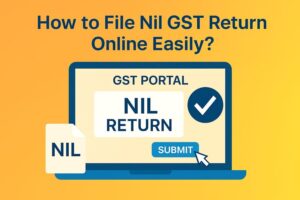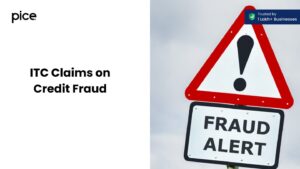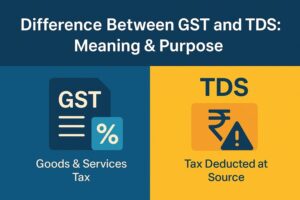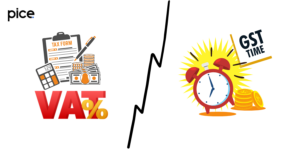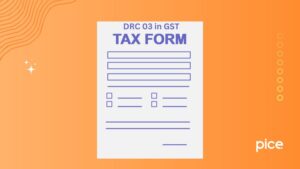What Is GST Fraud: A Comprehensive Guide
- 21 Jan 25
- 9 mins
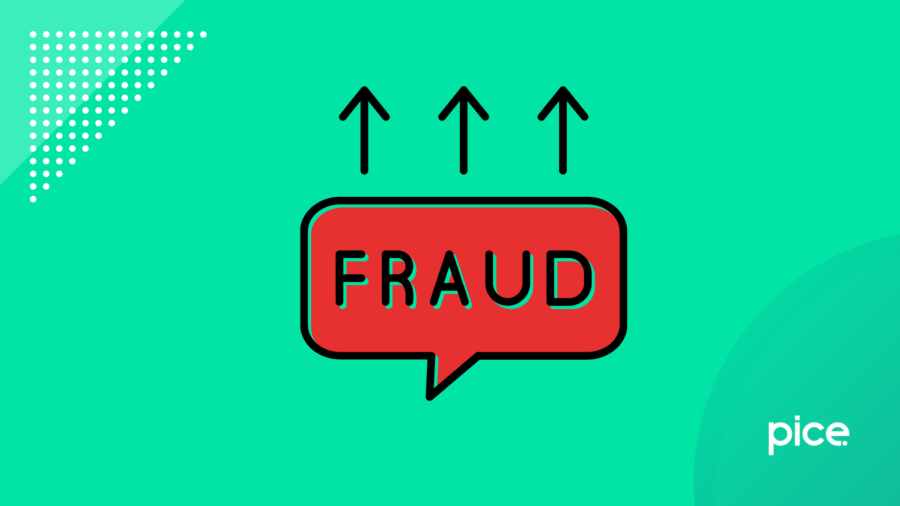
What Is GST Fraud: A Comprehensive Guide
Key Takeaways
- GST fraud exploits loopholes using fake invoices and false claims.
- Common frauds include fake ITC, circular trading, and export scams.
- Motives include financial gain, tax evasion, and inflated valuations.
- Penalties start at ₹10,000, or the evaded tax amount.
- Compliance and collaboration ensure GST fairness.
Goods and Services Tax (GST) is a comprehensive system in place to streamline the taxation procedure in India, through indirect tax levied on goods and services supply. However, the GST system is often vulnerable to fraud, with individuals/businesses exploiting the system for possible selfish gains.
So, you may be wondering, “What is GST fraud?” GST fraud, simply put, is the unlawful and ill-intentioned evasion of GST payments, faking of transactions that are liable to GST, or other deceptive practices aimed at finding a loophole within the GST system and bagging personal, undue benefits. This blog explains the details surrounding GST fraud, its types, triggers, consequences, and penalties.
What Is GST Fraud?
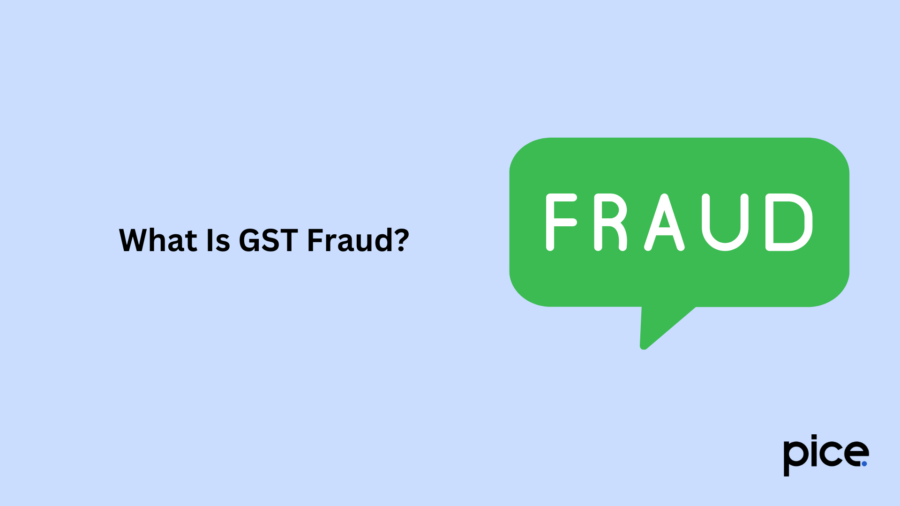
‘Fraud’ occurs when there is an unlawful, intentional act initiated by an individual or a group of people charged with governance or holding a place of authority or by third parties. They use deception with a clear intention of fraud to make personal gains and take unjust advantages, duping an elaborate system in the process—in this case, the GST system in India.
Fraud may be prompted in different forms, including the misstatement of financial records and other information or misappropriation of the entity's assets. The fraudster shall take to illegal methods in order to unlock unjust advantage out of the provisions of tax law.
The main areas of GST fraud possibilities include fake input tax credits and invoices, undue claims of refunds, etc. In addition, due to the increase in e-way bills and e-invoicing, there has been a severe boost in fraud possibilities.
To understand the extent of impact the GST frauds have, we are going to cite an example of a scenario that had recently taken place. A Pune-based autorickshaw driver had a fake company registered under his name, and this entity took centre stage within the Goods and Services Tax (GST) scam story, unearthed by the DGGI (Directorate General of GST Intelligence) authorities.
It involved an amount of a whopping ₹5,000 to ₹8,000 crore. The accused in this case are alleged to have 246 fake GST firms registered under their name to prompt the commitment of this multi-level, multi-crore fraud.
The individuals involved in these fake firms used stolen personal identities and several bank accounts to claim the GST transactions without actually supplying any goods or paying tax to the Indian government.
In the next section, we shall get more into the details about areas that are most vulnerable to GST fraud within India.
What Are the Areas Where GST Frauds Are Prevalent in India?
You are now probably aware that even the elaborate GST system is not foolproof and immune to fraudulent activities. Misuse of the invoice system under the GST regime has allowed several individuals to exploit the system. To avoid fake invoicing under GST, physical verification is necessary.
For example, there have been records of issuance of invoices without a real supply of goods or services, creation of shell companies and dummy entities, use of zero-rated supply categories, taking of credits on inward supplies on which credit is not legally permitted, under-billing on outward supplies, etc.
Fake invoicing is a major source of GST fraud and takes place when a taxable person issues a bogus invoice or fails to issue an invoice even after the actual supply of goods or services.
Here are some sectors within which GST frauds are more prevalent than not, in India:
1. Input Tax Credits Frauds: There have emerged a multiplicity of GST fraud cases surrounding the use of fake invoices to illegally avail Input Tax Credit (ITC). This ITC is later used to pay for GST on outward supplies and further used for the claiming of invalid refunds. This may work as a method of inflating the turnover of a specific supplier or taxable person.
2. Circular Trading: Circular trading essentially refers to the issuance of invoices by individuals who trade without actual supply of the promised goods or services. This is done in an attempt to avail the fraudulent input tax credit. There is a constant controversial debate upon the arrest of traders allegedly involved in the fraudulent ITC availment through circular trading under the GST system.
3. Export Frauds/GST Refunds: In the GST system, the amount that is not utilised is available in the electronic credit ledger and cash ledger, both accessible on the GST portal. After the payment of taxes and other liabilities, one can claim a refund of the remaining amount in legal accordance with the provision of Section 54 under the CGST Act, 2017.
However, fraudsters have found techniques to deceive the system here as well. By issuing fake invoices, taxpayers may claim an unjust refund of the unutilised GST on the export of services, without providing such supplies in actuality. They may also accept fake or made-up inward supply bills to increase the claimed amount of ITC refunds.
4. Misclassification of GST: By intentionally misclassifying the categories of goods and services to come under heads with lower GST rates, businesses often illegally evade higher tax rates. Such manipulation can be easier to miss as it necessitates in-depth scrutiny for clear detection. This form of GST fraud adds to the challenges tackled by tax authorities.
What Are the Main Reasons for the Increasing GST Fraud in Our Country?
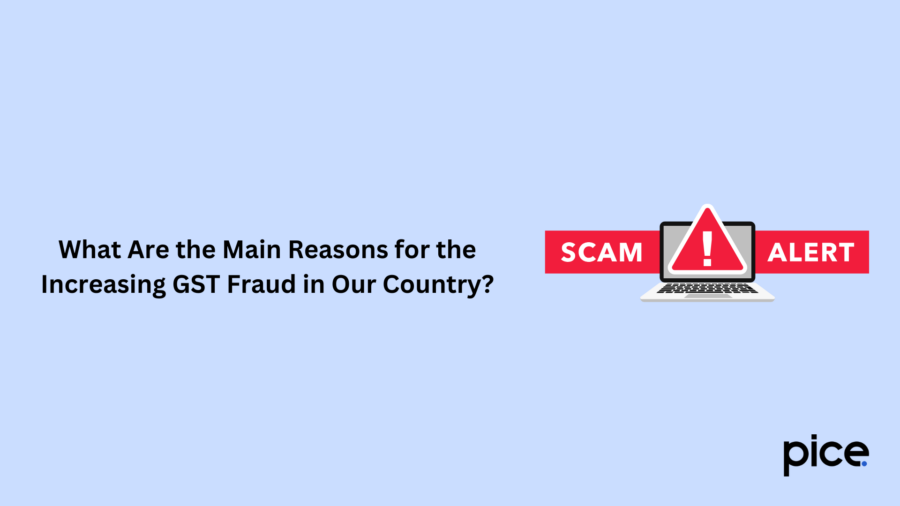
The main reasons contributing to the increase of GST fraud in India are constituted by personal advantageous gains and unlawfully earning a lot of extra money. Here are the major motives listed below, which may be fueling the skyrocketing of GST scams:
- Availability of fraudulent ITC
- Saving extra cash by payment of tax liabilities using fraudulent ITC
- Use of fake invoices to avail the advantage of ITC, transferring them to individuals who want to reap benefits, illegally charging a fee for the same
- Improvement of company valuation; to apply for an IPO or sell off company stakes
- Availability of higher Overdraft limits or Cash Credit from banks or financial institutions
- Secretly supplying goods/services without raising invoices or paying taxes
- Reduction of tax liability by being able to show higher expenses/compromised profits
- Obtainment of government/private contracts needed for manufacturing
- Dodging the requirement to pay Income tax by reducing net profit
- Encashment of ITC by claiming refunds on the zero-rated supply/inverted duty model
What Are the Offenses That Are Penalised and Bound to be Registered as an Offense?
There are certain illegal acts substituting GST frauds that are registered as offences under law and are subject to applicable penalties. The below-mentioned offences are penalised under Section 122 of the GST Act in India:
- Issuance of fake invoices
- Not issuing an invoice for the goods or services that have been, in fact, supplied.
- Fraudulently claiming the refund of taxes
- Claiming input tax credit without the receipt of goods
- Illegal manipulation of financial or other records
- Not opting for GST registration to avoid tax payment
- Providing false information and claims to tax officials
- Availing taxable goods without any record or documentation
- Inability to maintain books of accounts
- Tampering with or intentionally destroying evidence
- Tampering with or intentionally destroying seized goods
Note: The above-mentioned offences are prone to a penalty fee, but the amount shall apply as per circumstances.
What Is the Penalty for the Offences Mentioned Earlier?
As discussed above, there are illegal acts in regard to the GST system in India that are considered to be offenses, and thus, involved individuals are liable to pay a penalty fee. For the offences that have been specified in the previous section, a penalty of ₹10,000 shall be paid. There are other factors that determine the penalty amount.
An equivalent amount to the tax money invaded; the tax that has not been deducted under section 51/ short deducted/ deducted yet not paid to the Government; tax that has not been collected under section 52/ short collected/ collected but not paid to the Government; input tax credit opted for/ passed on/ distributed irregularly; the refund claimed illegally - whichever amount is higher, may be charged as penalty fee.
Conclusion
The GST system in India has brought forth strict compliance rules, which the average taxpayer is bound to follow. Non-compliance with such regulations shall lead to undesirable positions where a person has to pay high interest as well as penalties. However, it is important to note that all GST fraud is not premeditated. Some may, in fact, occur due to system or human-made errors.
Any party with a role in the fraudulent activity has the right to be heard. They must submit all the original documents to prove their claim. Any possible unintentional act of tax evasion will be heard and the initially accused person will be set free after the proof/evidence has been essentially verified.
The government and the businesses should ideally work together in accordance with the law, to make the GST system function more efficiently and fairly.
💡If you want to streamline your payment and make GST payments, consider using the PICE App. Explore the PICE App today and take your business to new heights.
 By
By 





